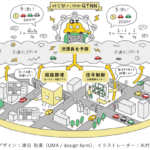2023-08-07 カリフォルニア大学サンタバーバラ校(UCSB)
◆研究では、Auger-Meitner効果が重要な役割を果たしており、電子が他の電子を高エネルギー状態に蹴り上げることでエネルギーを失うことが解明されました。これにより、青や紫外線のLEDの効率低下の謎が解決されました。フォノン媒介プロセスでは対処できない大きなエネルギーを持つ電子の損失を解明し、広いバンドギャップ材料における効率制限の理解に貢献すると期待されています。
<関連情報>
- https://www.news.ucsb.edu/2023/021161/uncovering-auger-meitner-effects-crucial-role-electron-energy-loss
- https://journals.aps.org/prl/abstract/10.1103/PhysRevLett.131.056402
トラップ支援オージェ・マイトナー再結合を第一原理から解明 Trap-Assisted Auger-Meitner Recombination from First Principles
Fangzhou Zhao, Mark E. Turiansky, Audrius Alkauskas, and Chris G. Van de Walle
Physical Review Letters Published 2 August 2023
DOI:https://doi.org/10.1103/PhysRevLett.131.056402
ABSTRACT
Trap-assisted nonradiative recombination is known to limit the efficiency of optoelectronic devices, but the conventional multiphonon emission (MPE) process fails to explain the observed loss in wide-band-gap materials. Here, we highlight the role of trap-assisted Auger-Meitner (TAAM) recombination and present a first-principles methodology to determine TAAM rates due to defects or impurities in semiconductors or insulators. We assess the impact on efficiency of light emitters in a recombination cycle that may include both TAAM and carrier capture via MPE. We apply the formalism to the technologically relevant case study of a calcium impurity in InGaN, where a Shockley-Read-Hall recombination cycle involving MPE alone cannot explain the experimentally observed nonradiative loss. We find that, for band gaps larger than 2.5 eV, the inclusion of TAAM results in recombination rates that are orders of magnitude larger than recombination rates based on MPE alone, demonstrating that TAAM can be a dominant nonradiative process in wide-band-gap materials. Our computational formalism is general and can be applied to the calculation of TAAM rates in any semiconducting or insulating material.



